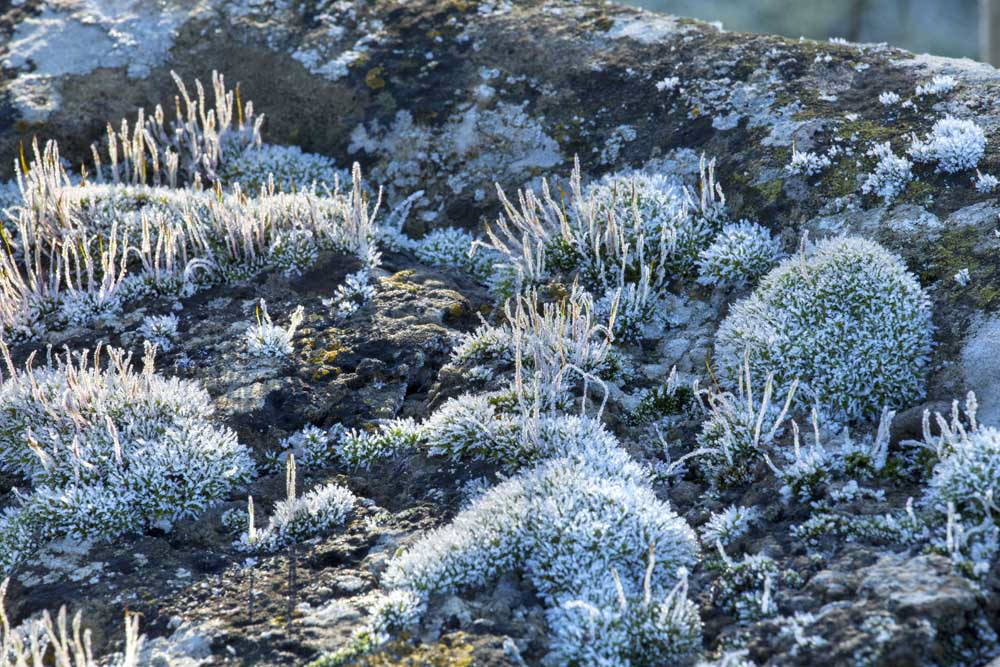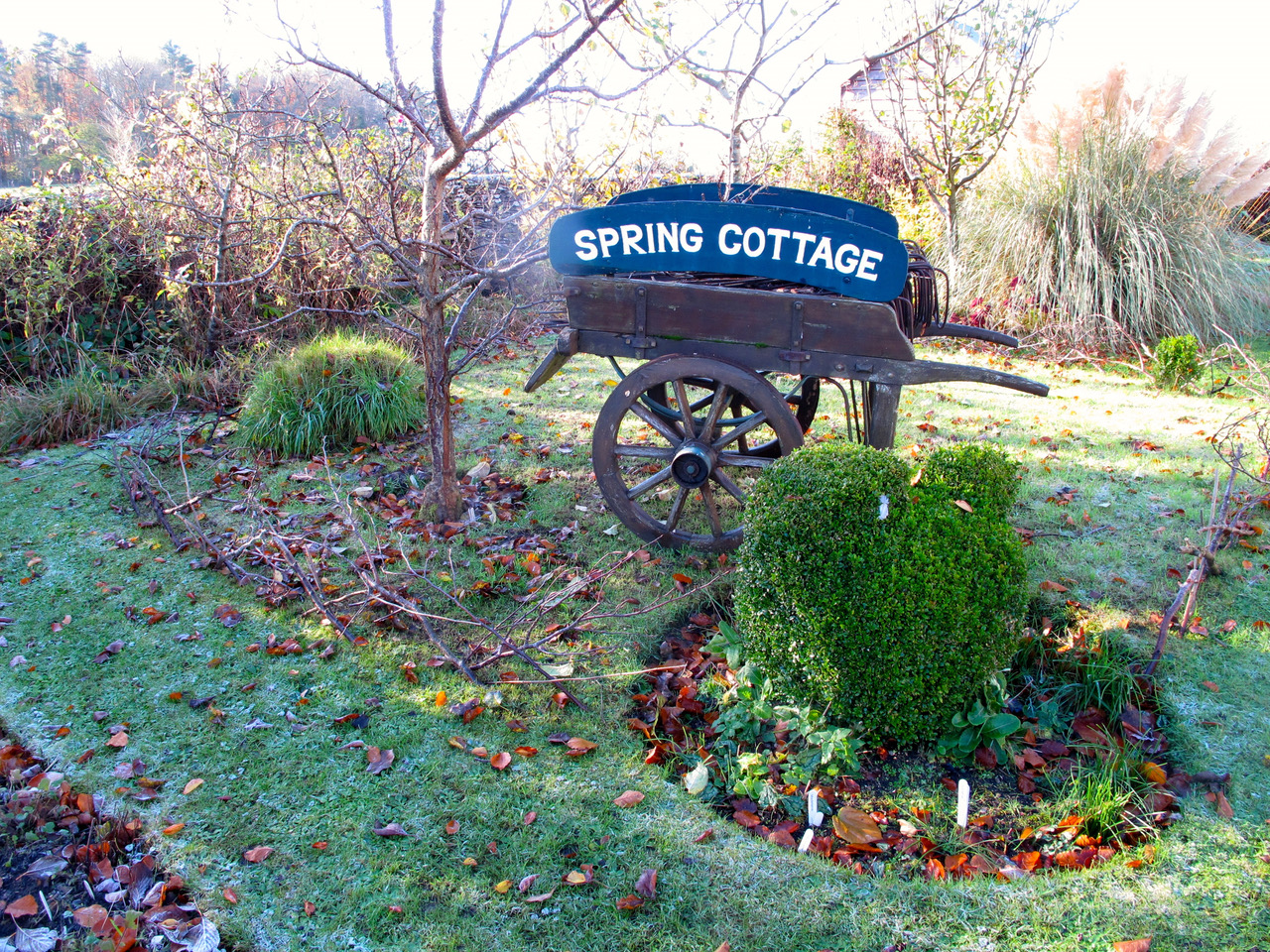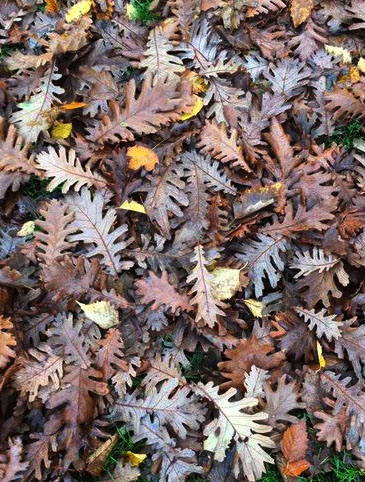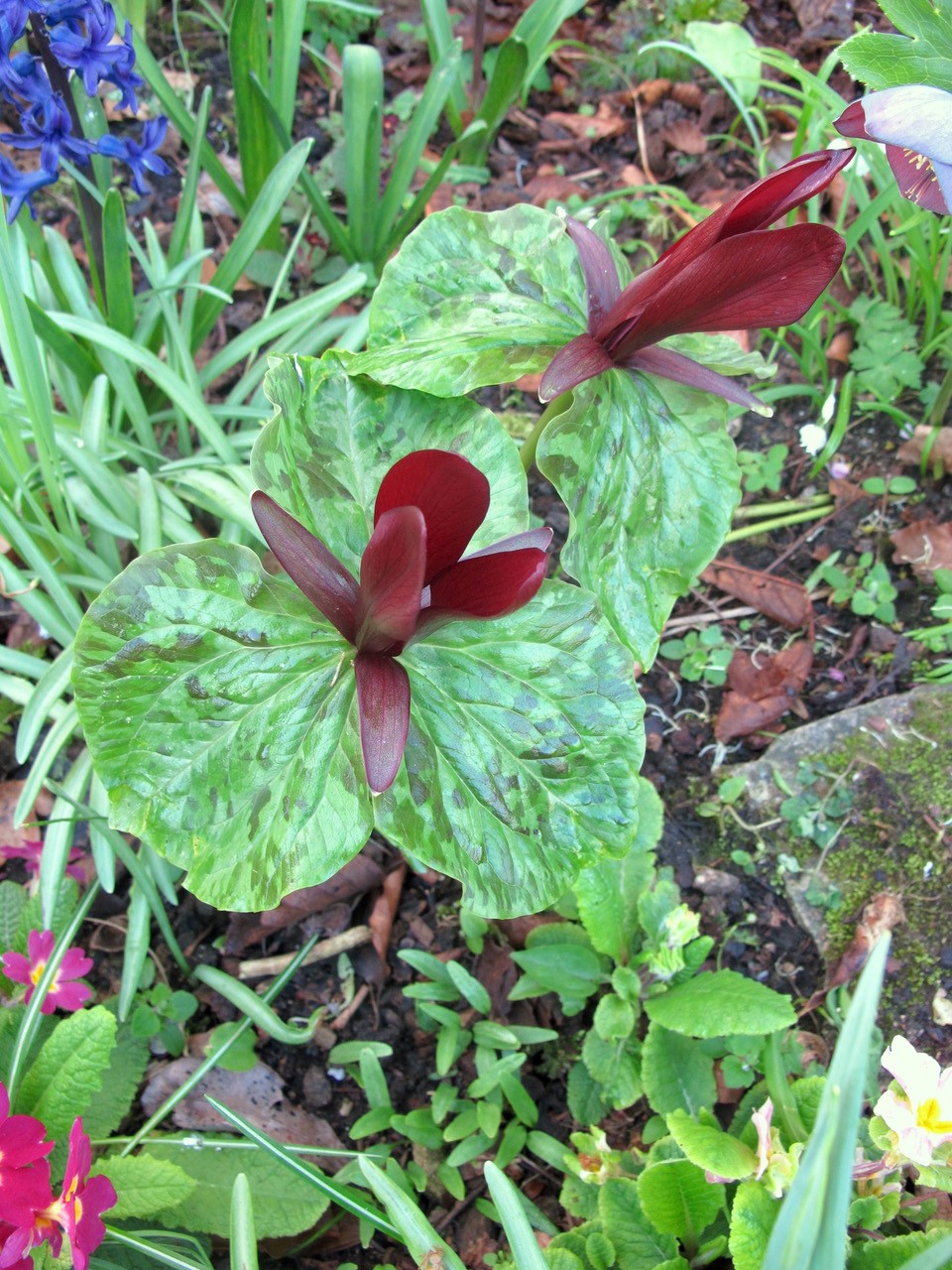
I’ve been picking up a lot of leaves lately, so many that when I close my eyes I see orange beech leaves in my subconscious. I even dream of orange beech leaves, because there are several mature beech trees close to Spring Cottage and they usually chose to drop their leaves on me. You can slosh through them with your wellies, like a toddler, and make a very satisfying sound. If I seem to be complaining, I’m not. I love the sound of rustling leaves, on a late-autumn day, and I’m taken back to the American poet Robert Frost (1874–1963), who wrote in Gathering Leaves ‘I make a great noise… Of rustling all day… Like rabbit and deer…Running away’.
My basic equipment is a wheelbarrow and a rubber rake, the latter the most invaluable garden tool every invented. Bulldog Tools sell them and you can rake through foliage without damaging the plants underneath, so they are much kinder than those scratchy metal-tined rakes. And I’m not fan of those horribly noisy leaf blowers either. I was subjected to the full horror when I paid over seven pounds to visit a nearby arboretum last autumn. A young garden lad alienated the many visitors, on a perfect autumn day in half term, by blowing the leaves into tiny heaps for hours on end. By the time I left, vowing never to come again, the heaps were being redistributed on a rising wind. Visor-clad men blast my lane too, blowing the leaves off the grass and into the road for no other reason than they can. It’s lazy, one-armed gardening and ( dare I say it ladies) it’s a male speciality. Give them anything mechanical and they’re off !
The beech leaves come down in fits and starts and they’re very dry to the touch, so they take a long time to rot down. The Best Beloved calls them recalcitrant, a technical term he says, and I think he means the leaves. The dictionary definition being “having an obstinately uncooperative attitude towards authority or discipline.” Enough said. Recalcitrant leaves means something different though. They’re leaves that have lots of cellulose and pectin, among other things, so they rot down slowly.

Beech leaves take longer to rot than many others because they’re high in lignin, a substance from the cell walls of woody plants. This is why leaves should not be added to a compost heap in any quantity. They slow the whole process up. Make leafmould instead. Collect them up, add them to a pile, and then it turns into a dark, crumbly friable mulch after two years. Leafmould can be made in one year, if the pile of leaves is regularly turned, but I’m afraid I never manage this. I just leave my leaves to their own devices, in a wooden frame, and then they’re ready in two.
Oak, beech and hornbeam make the best leafmould of all, but you should avoid walnut, eucalyptus, camphor laurel and cherry laurel because their leaves contain inhibiting toxins. You can make a simple wire frame, or put your leaves into black bags with holes in them. Don’t put your useful leaves in a green bin, they are too good to waste. They will also go into methane-producing green waste and that’s bad for the planet.
The RHS advises shredding thicker leaves, such as sycamore, horse chestnut and sweet chestnut leaves, before adding to the heap. Running over them with a mower also speeds up the decomposition process and any leaves on my lawn get this treatment, on a high cut. Pine needles rot down very slowly, producing an acidic mulch, so you may want to leave these in situ, or make a separate pile. They’ll be useful under azaleas and other acid lovers, including blueberries.
I can’t make enough leaf litter for the whole of my woodland garden, unfortunately, but I do have enough to spread over my prized trilliums every other year. I apply it in late-autumn, on to damp soil on frost-free days, and they love it. Never mulch cold, frozen or dry soil. The soil must be moist and on the warm side, to encourage plants to thrive. You can use leafmould to make potting compost, for use in your greenhouse, although mine is too precious. It’s feeding my trilliums very, very slowly.
I don’t collect every leaf in the garden because a carpet of leaves is a winter duvet that might be sheltering amphibians and insects. I’m reminded of a day in the early 1990s, when I was gathering leaves up under a beech hedge in my Hook Norton garden. I had ultra-thick gloves on because it was a raw, winter’s day. I heard the phone ring, took the gloves off and went into answer. When I came out the glove fairy had been and snaffled my gloves, so I carried on with bare hands. My sensitive fingers felt lumps among the leaves and they turned out to be hibernating frogs and toads, from my pond, and there were lots of them already in the wheelbarrow. Yikes! I put them and the leaves back with haste, gentle haste. Moral being Val, leave leaves well alone in places where they’re doing no harm.

That Hook Norton garden had a large Viburnum x bondantense ‘Dawn’ close to the log pile. On dank November days the clusters of pink flowers delivered a powerful hyacinth scent so getting the logs in was never a chore! It would flower in flourishes, up until March, whenever the weather was clement. You could pick it too. When it dropped its leaves, in a rather dark corner of the garden, they turned charcoal grey and highlighted some golden wood sedges, Luzula sylvatica ‘Aurea’. The two created a winter spectacle, golden spiders among a shag-pile carpet of pencil-lead leaves.
Further down the garden I had a mini-copse of hazel, ordinary Corylus avellana, that I grew to coppice for plant supports. Every two or three years I cut a few poles. I never tidied the hazel leaves up in that area and the snowdrops and hellebores loved pushing through the dry leaf litter.
It’s no wonder that Vita Sackville-West fell in love with The Nuttery at Sissinghurst on her very first visit. She went on to ruin it of course, with gaudy commercial primroses, until the dynamic duo ( Joint Head Gardeners Pamela Schwerdt and Sibylle Kreutzberger) planted a subtle mixture of wood anemones, blue pulmonarias and euphorbias. The National Trust are reverting to Vita’s gaudier plan and one wonders why.
I try to leave a fair few leaves on the ground where I can, because they make useful nesting material for birds and for hedgehogs, along with moss. We get plenty of moss in the garden and lichens straddle to tops of our stone walls. Wrens constantly forage through it in winter and it looks wonderful in low winter light, almost like a series of antlers. I love the colour of fruiting lichen too, somewhere between jade and silver, and there are touches of ochre and red as well.
A few years ago I equipped my two eldest grandchildren, India and Ellie, with good quality children’s microscopes made by Thames and Kosmos. The girls collected a small amount of lichen off the wall and it was teeming with life, tiny mites I presume, so no wonder the wrens are so interested in the tops of the walls. The common footman moth’s caterpillars, brown fuzzy bears, feeds on lichen too between August and May.

I pick the leaves away from prized snowdrops, trilliums and early bulbs because, in some years, every leaf comes with a free baby slug and come spring it will devour your flower buds. I leave as many as I can though, for wildlife. This year’s warm, dry spring seems to have lessened the numbers of slugs, although they have still managed to nibble some autumn-flowering snowdrops.
Leaf gathering will finally end in early December, to be replaced by rose pruning. It’s the routine of gardening I find so reassuring, for it rolls through the year whatever’s going on in life and that includes Corona virus. I look forward to winter sunsets, weather that takes your breath away and turns you into a smoke-puffing dragon and, of course, the harbingers of spring. Snowdrops, crocuses and aconites flower in numbers, now that we’ve been in this garden for fifteen years!
Gardening is so much more than toil, for you commune with the seasons and what could be more autumnal than a bit of selective leaf gathering!











